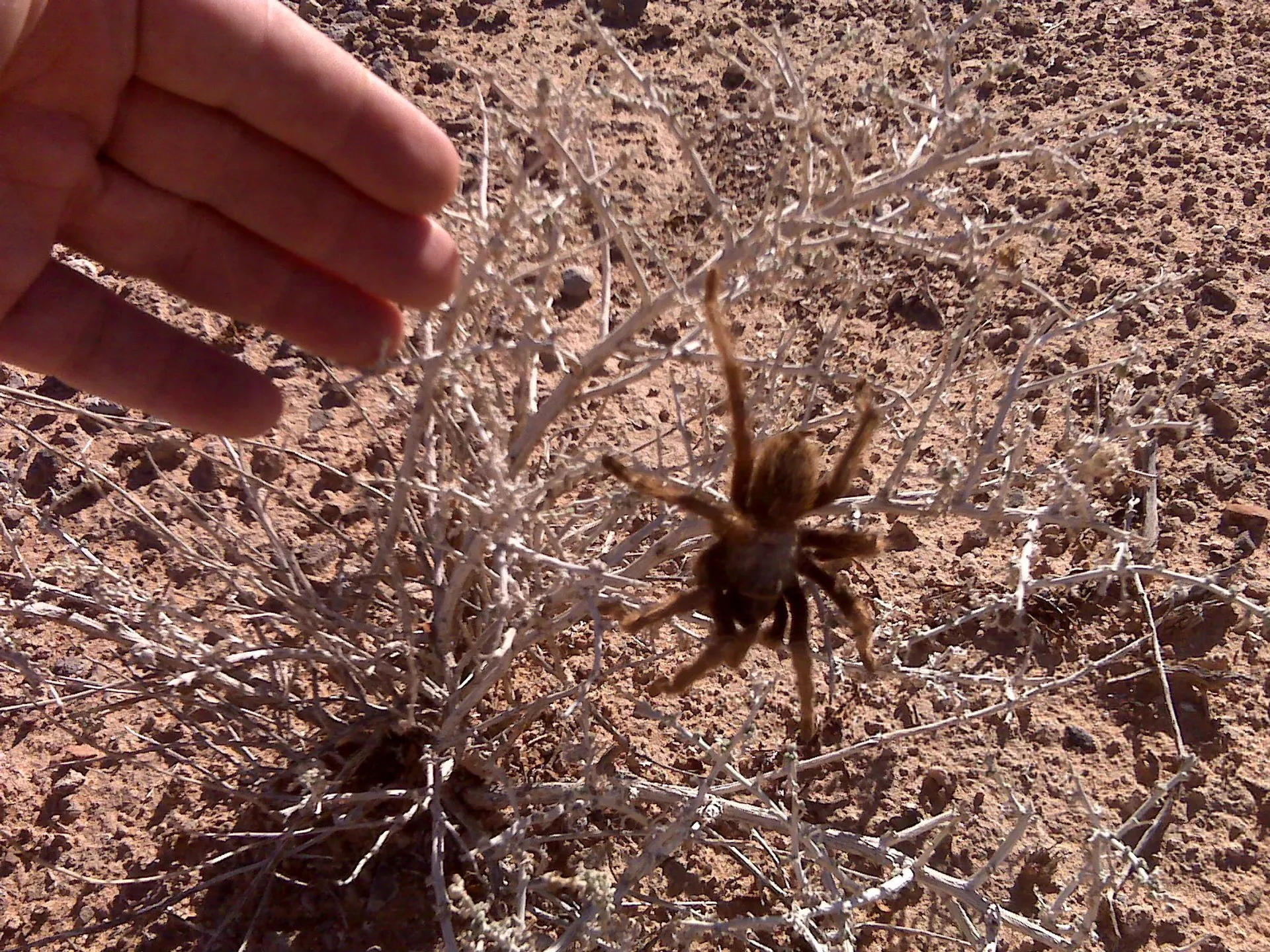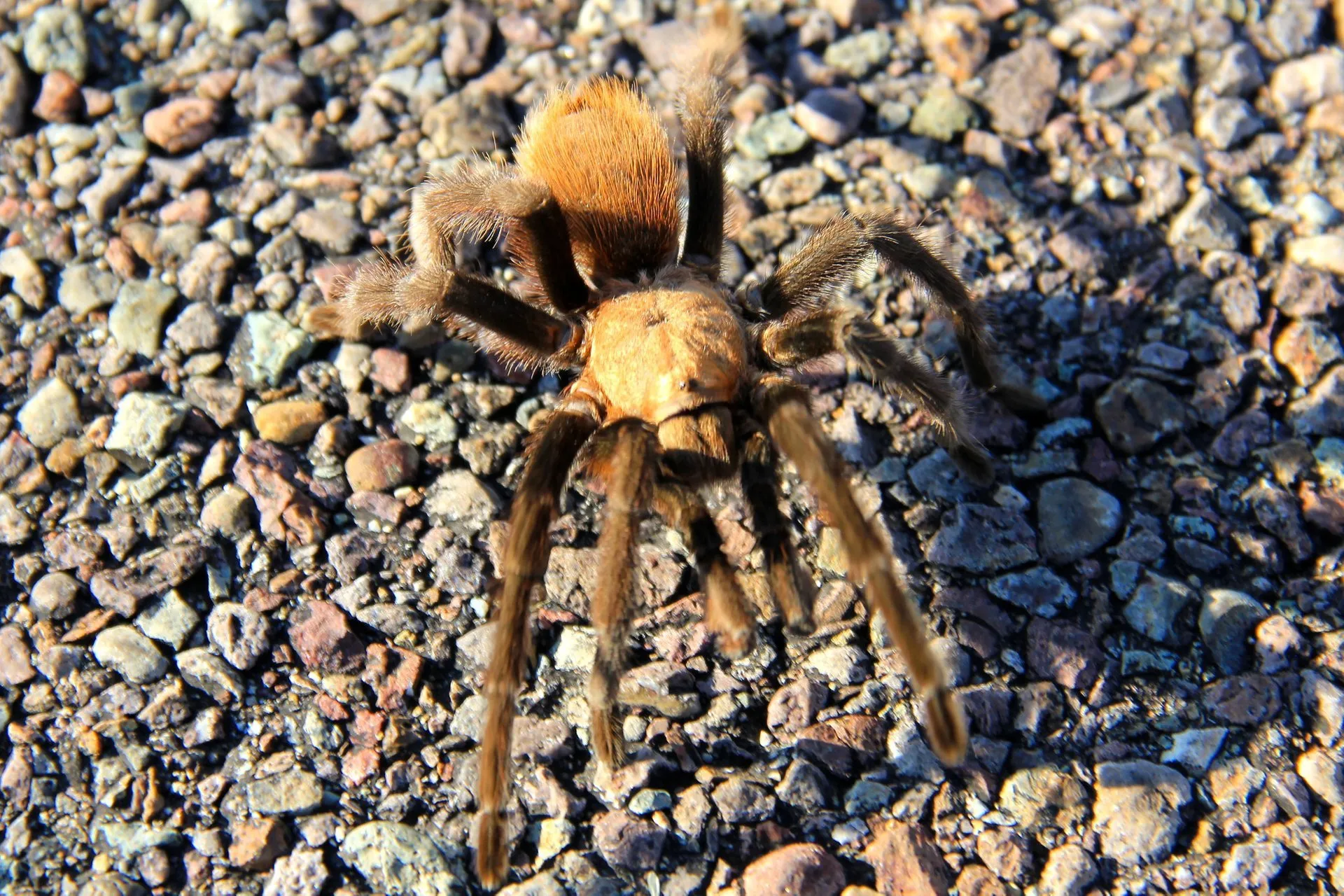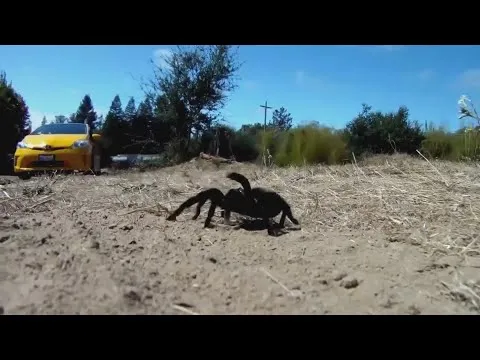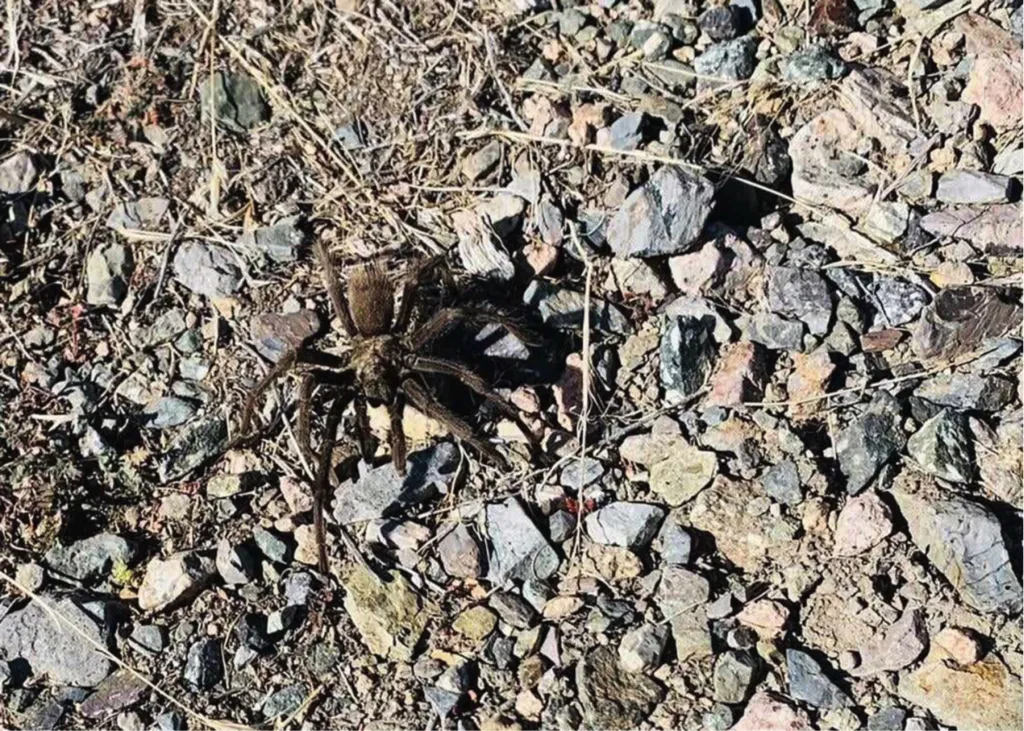What is the Tarantula Migration
The tarantula migration in New Mexico is a spectacular natural event, drawing the attention of nature enthusiasts and curious onlookers alike. This annual phenomenon involves thousands of tarantulas, primarily the Texas brown tarantula (Aphonopelma anax), embarking on a journey, typically in search of mates. This migration is a critical part of their reproductive cycle, with adult males venturing out from their burrows to find receptive females. The sight of these large, hairy spiders traversing roads, fields, and trails is a unique and unforgettable experience, showcasing the raw beauty and complexity of the natural world. Understanding this migration is not only about witnessing a fascinating event but also about appreciating the intricate behaviors and ecological roles of these often-misunderstood creatures. It’s a reminder of the diverse life that thrives in the landscapes of New Mexico and the importance of respecting and preserving their habitats.
Understanding Tarantulas and Their Behavior
To fully appreciate the tarantula migration, it’s essential to understand the basics of tarantula behavior and biology. Tarantulas are large, hairy spiders belonging to the Theraphosidae family. They are primarily nocturnal hunters, feeding on insects and small animals. In New Mexico, the Texas brown tarantula is the most common species. These spiders typically live in burrows, which they construct in the ground. The males, identifiable by their longer legs and smaller bodies, leave their burrows during the mating season. They are generally not aggressive, but they can bite if provoked. Their primary defense mechanism involves flicking urticating hairs from their abdomens. Understanding these behaviors allows for a safer and more respectful observation of the migration. Observing their patterns of movement, mating rituals, and interactions with their environment provides valuable insight into their survival strategies.
The Annual Migration Cycle

The tarantula migration is an annual event, but the exact timing can vary slightly depending on weather conditions and other environmental factors. Typically, the migration begins in late summer or early fall, often from August to October. During this period, male tarantulas become sexually mature and begin their search for mates. The entire process is driven by the spiders’ internal biological clocks and external environmental cues, such as temperature and humidity. The males travel considerable distances, sometimes several miles, in their quest for a female. Their journey involves navigating various terrains, encountering potential hazards such as traffic, predators, and environmental changes. Understanding the timing of this cycle is crucial for planning your viewing experience, as it ensures you are present during the peak activity period. Observing this cycle showcases the remarkable precision of nature’s processes.
Factors Triggering the Migration
Several factors trigger the tarantula migration in New Mexico. Primarily, the onset of the mating season is the key driver. As the days get shorter and temperatures begin to cool slightly, male tarantulas are prompted to leave their burrows. Weather conditions also play a significant role. Warm, humid evenings are ideal for migration, as they provide favorable conditions for the spiders to move around. Rainfall can also influence migration patterns, with periods of rain often followed by increased activity. Other environmental factors, such as the availability of suitable habitats for mating and the presence of receptive females, can also influence the timing and intensity of the migration. Understanding these triggers allows for better predictions of when and where the migration is most likely to occur, improving the chances of witnessing this natural marvel.
When and Where to Witness the Migration in New Mexico
The best places to witness the tarantula migration in New Mexico are often found in areas with suitable habitats and favorable weather conditions. The migration typically occurs in the southern and central parts of the state. Popular locations include areas around Carlsbad, Roswell, and the open deserts and grasslands. Roads with low traffic and open fields often become prime viewing spots. It’s essential to research specific locations and check for recent reports or sightings to optimize your chances. Local wildlife organizations and online forums can provide valuable information on recent migration activity. Planning your visit around the peak migration period and selecting areas known for tarantula populations increases the likelihood of an unforgettable experience. Remember to prioritize safety and minimize disruption to the spiders and their habitat.
Best Time for Viewing

The optimal time for viewing the tarantula migration in New Mexico is usually in the late afternoon or early evening, as the sun begins to set and temperatures cool down. This is when tarantulas are most active and likely to be on the move. Weekends also tend to have higher activity as more tarantulas emerge from their burrows. The migration continues through the night, but visibility becomes more difficult. Therefore, planning your viewing experience around the twilight hours is recommended. Be prepared with appropriate lighting, such as a flashlight or headlamp, to safely observe the spiders in low-light conditions. However, remember to use the light sparingly and avoid shining it directly into their eyes, as this can disturb their behavior. Patience is key, as tarantulas may take time to appear. The patience to observe ensures the best viewing opportunities.
Optimal Locations for Observation
Choosing the right location is key to maximizing your chances of witnessing the tarantula migration. Open areas such as deserts, grasslands, and roadsides with minimal traffic are ideal. These locations provide clear visibility and fewer obstacles for the spiders. Check for areas with known tarantula populations by researching local wildlife reports and consulting with regional nature organizations. Roads that pass through suitable habitats are excellent viewing spots, but always prioritize safety. Be cautious of traffic and watch for tarantulas crossing the road. Some state parks and wildlife refuges might offer guided tours or designated viewing areas. Remember to respect private property and obtain permission before entering. Finding the right location enhances the viewing experience and helps you witness the best parts of this natural phenomenon. Also make sure that you have proper shoes.
Tips for a Safe and Enjoyable Viewing Experience
To ensure a safe and enjoyable experience, there are several important tips to keep in mind. First, wear appropriate clothing, including closed-toe shoes, long pants, and possibly a long-sleeved shirt, to protect yourself from potential bites or exposure to urticating hairs. Carry a flashlight or headlamp for visibility in low-light conditions, and always be aware of your surroundings. Maintain a safe distance from the tarantulas and avoid handling them, as they can bite if threatened. Educate yourself about tarantula behavior and habitats to better understand their actions. Never disturb or harass the spiders. Bring a friend or go with a group for added safety. Be patient, and remember that witnessing the migration requires observation and respect for these creatures. These precautions maximize safety and allow you to fully immerse yourself in the experience.
What to Bring

Preparing with the right equipment will enhance your viewing experience. Essentials include a flashlight or headlamp with extra batteries for navigating in the dark. Bring a pair of binoculars to observe the tarantulas from a distance. Sturdy closed-toe shoes and long pants are crucial for protection against potential bites and contact with urticating hairs. A camera or smartphone for capturing the moment. Water and snacks are essential, especially if you plan on being out for an extended period. A first-aid kit is also recommended. It is crucial to bring a printed map or use a GPS device to navigate in areas with limited cell service. Be prepared for changing weather conditions by bringing a light jacket or rain gear. Packing these essentials will help you stay safe and comfortable while observing the tarantula migration.
Safety Precautions
Safety should be your top priority when observing the tarantula migration. Always maintain a safe distance from the tarantulas. Never attempt to handle or provoke them. Be cautious of traffic if observing near roads. Be aware of your surroundings, as tarantulas aren’t the only wildlife you may encounter. Avoid walking in tall grass where tarantulas may be concealed. If you are bitten, seek medical attention if symptoms worsen or become serious. Educate yourself about the potential risks and how to respond appropriately. Keep a safe distance from other potential dangers such as snakes or scorpions. Inform someone of your plans and location before setting out. Taking these precautions ensures that you can enjoy the migration safely and responsibly. Remember to always respect the wildlife and its environment.
Respecting the Tarantulas and Their Habitat
Respect for the tarantulas and their habitat is vital for the preservation of this natural phenomenon. Avoid disturbing their burrows or causing any harm to the spiders. Refrain from using flash photography, which can disrupt their behavior. Stay on designated paths and avoid trampling vegetation, as this can damage their habitat. Do not litter or leave any waste behind. Support conservation efforts by educating others about the importance of tarantula habitats and ecosystems. Practice Leave No Trace principles, packing out everything you pack in. By demonstrating respect and promoting responsible viewing practices, you contribute to the long-term survival of tarantulas and the preservation of their natural environment. This helps ensure that future generations can enjoy this unique natural spectacle.
Why the Migration Matters

The tarantula migration is significant for several reasons. It is a vital part of the tarantulas’ reproductive cycle, ensuring the continuation of their species. The migration also plays an important role in the ecosystem, influencing the balance of the local food chain. It draws attention to the importance of habitat conservation and the protection of biodiversity. Witnessing this event fosters an appreciation for the natural world and highlights the need for responsible tourism and environmental stewardship. The migration provides an opportunity for scientific research, allowing for the collection of data on tarantula behavior, population dynamics, and environmental impacts. It highlights the intricate connections between all living things, reminding us of the value of protecting our planet’s diverse wildlife.
The Ecological Significance
Tarantulas play a crucial role in the ecosystem. They are predators, helping to control populations of insects and other small animals. As prey for larger animals, they are a food source that sustains other species. The burrows constructed by tarantulas also benefit other organisms, providing shelter and habitat. The migration allows for the distribution of tarantulas across a wider area, influencing the ecosystem’s health and balance. Their presence indicates a healthy ecosystem, with a variety of resources to support their life cycle. Protecting tarantulas and their habitat benefits the entire ecosystem, ensuring that the area remains vibrant and diverse. Their contribution to the food web underscores the significance of their existence and the importance of their conservation.
How to Contribute to Conservation Efforts
Contributing to conservation efforts is essential to protect tarantulas and their habitats. Support local wildlife organizations and conservation groups working to protect tarantulas and their environment. Participate in citizen science projects, such as reporting sightings of tarantulas or helping monitor their populations. Advocate for the preservation of natural habitats by supporting policies and initiatives that protect wildlife. Educate others about the importance of tarantulas and their ecological role. Practice responsible tourism, avoiding activities that could harm tarantulas or their habitat. Reduce your impact on the environment by conserving resources and minimizing waste. By taking these actions, you can contribute to the long-term survival of tarantulas and help ensure that future generations can enjoy the spectacle of the tarantula migration in New Mexico. Awareness and actions are important.
